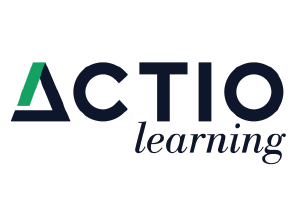Winston Churchill is quoted as saying, “I am always ready to learn, although I do not always like being taught.” In the same way, I have found that while good people are always in need of encouragement, they don’t always like hearing a pep talk. No one really listens to the person who is insistent upon inspiring them. (I know that I don’t.) Still, while pep talks are rarely encouraging, reminders sometimes are.
So, what follows is simply a reminder. We’ll start it with a story.
The village of Pukuka was a small one. Dusty and populated by a scattering of huts, to western eyes, it looked as if it had simply risen out of the ground. But there was joy there. The year was 2010, and in the brief peace that had interrupted decades of war and religious oppression in South Sudan, churches had started springing up. And when a church wanted to start construction, the chief of the village was almost always open to donating the land, given certain considerations.
I was part of a delegation that traveled to Pukuka to attend to these kinds of considerations. (Actually, I just sort of tagged along.) As I listened to the negotiations, which were partially translated into English, it became clear that for the good of the village and the health of the people, the price of the land amounted to three things: a borehole for clean drinking water, the promise of a school and the possibility of a medical clinic. In other words, it was water, learning and health care — in that order. At their core, the people of Pukuka understood that while clean drinking water would keep them from getting sick, it was learning that would make them well.
This past year has been hard, but we shouldn’t pretend that we are in a special category of suffering. Most of us have a difficult time understanding the generational hardship that other people endure. Still, no matter where we find ourselves on the troubled-times continuum, the lesson from Pukuka remains the same: It is learning that will make us well.
In the midst of designing solutions and determining delivery modalities, training professionals can lose connection with why they do what they do. Being busy has a way of vanquishing meaning. It’s not unique to the training industry; in whatever endeavor we pursue, as people, we tend to fall in love with the process and forget the purpose. It’s not surprising; after all, the process makes us experts and purpose, only poets.
Nonetheless, when times are hard, like now, an appeal to purpose is not only nice — it is necessary. To paraphrase Victor Frankl, when people understand the “why,” they can endure almost any “how.” So, as we exhale, take another a deep breath and ready ourselves to continue walking what still promises to be a difficult path, a reminder of the “why” seems like the good and right thing to do.
What We Do
We can do what we do because someone showed us how. Apart from the autonomic nervous system and things like breathing, sweating and so on, our actions, both good and bad, are primarily a product of our learning.
Think about that statement for a minute. What a powerful force learning is! It can foster prosperity, encourage enlightenment and cause music to fill the air — and it can do the opposite as well. There is a cautionary line in an old Guy Clark song that says, “He did not know he could not fly, so he did.” Learning also has the power to steal dreams, trample ambition and create darkness in the world.
As such, the practitioners of this magical thing called learning must not only be skilled at their craft but also both moral and hopeful in their practice of it. The practice is not always easy, which is partially why it’s so important.
What It Means
Short of divine intervention, the only way we can move from the place we are now to a better one is to learn our way to it. Before this pandemic, training professionals may have been concerned with the organizational impact of automation, humanity’s growing partnership with artificial intelligence or literacy levels. While these concerns may have remained the same, their urgency has accelerated. When the world shakes, things break.
But stripped of their facades, problems also become easier to see. It’s no coincidence that a large part of process improvement methodologies, and their accompanying tool sets, are devoted simply to assessing the current situation. It turns out that like people, both institutions and organizations have a hard time looking honestly in the mirror.
Now, however, the mirror is front and center. It’s almost hard not to see an honest angle. As such, there is opportunity in the calamity. With learning as the antidote and training as its application, the mission of the training industry has never been more meaningful.
Whom Is It for
School teachers talk about the light that comes on in children’s eyes when they actually “get it.” Journeymen talk about the spring in apprentices’ step when they pass the first competency test. Corporate instructors talk about the question that someone asks from the very back of the room that is finally the right question.
If it is approached correctly, with the right amount of respect, training is a way to serve others. That service helps others take a positive step, which helps them take another positive step, and then another. Who knows where they will go.
What an amazing story to be a part of. What a time to be a part of it. And, most of all, what a fine purpose to pursue.
Just a reminder.





